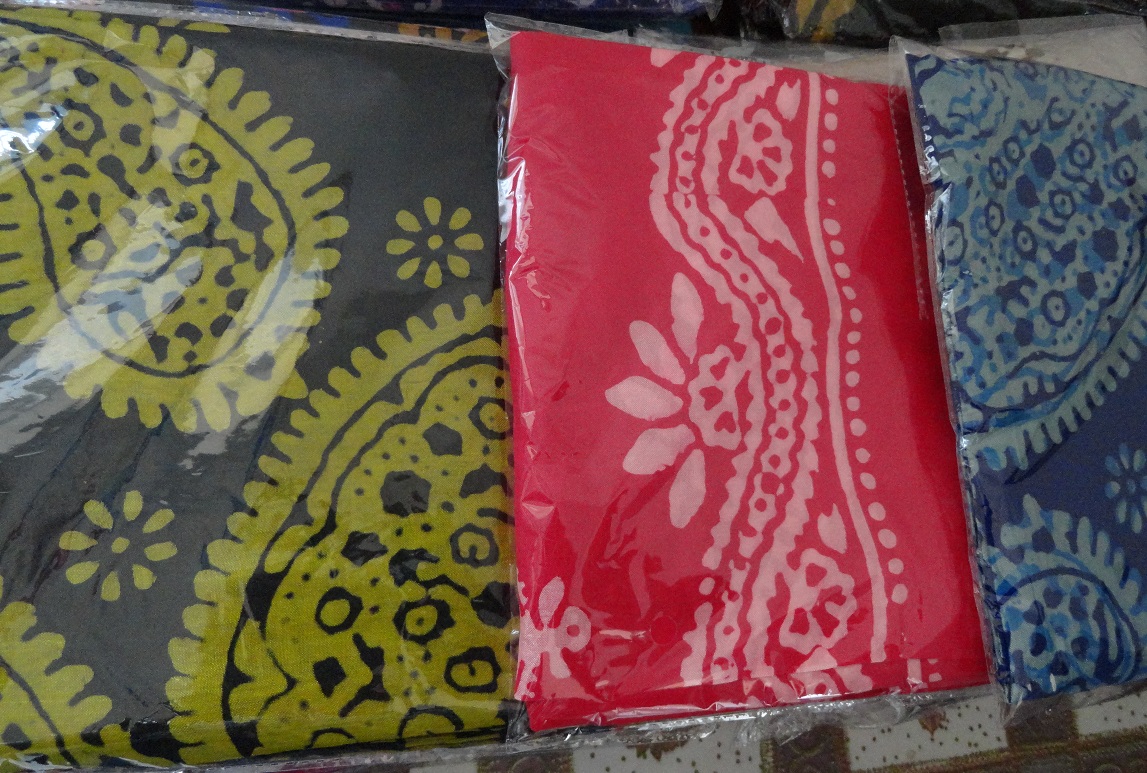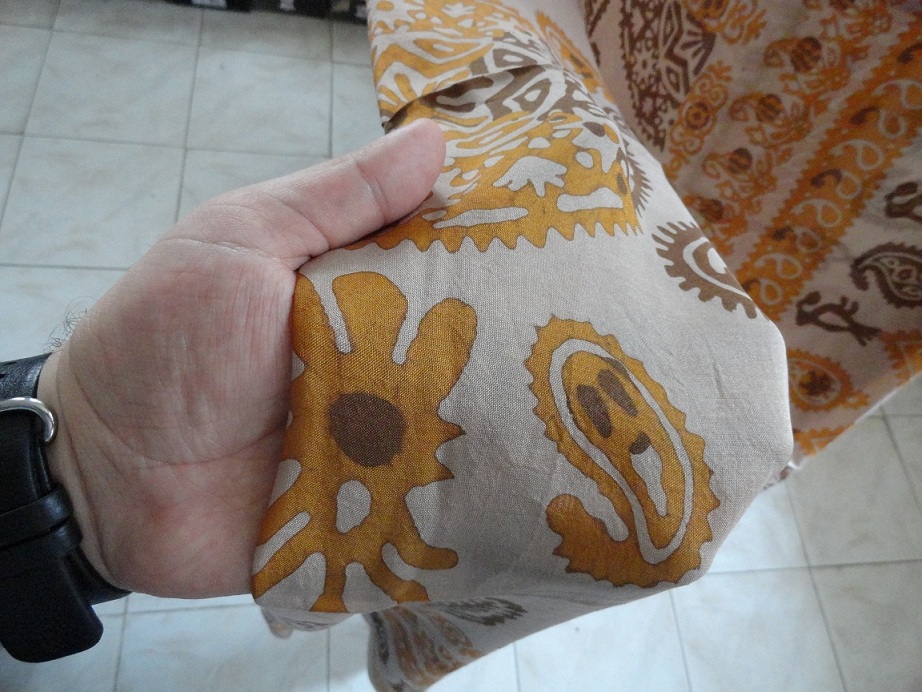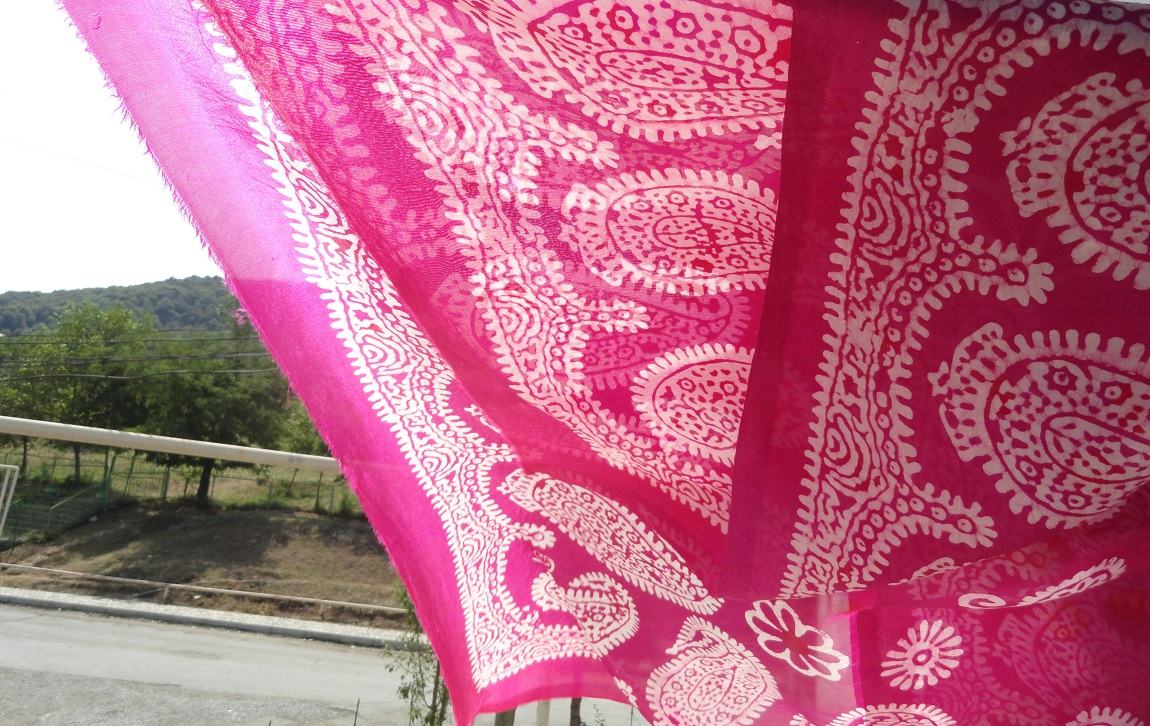If there is one object – an article of clothing – that encompasses the history of Azerbaijan, expresses its Turkic and Islamic roots, and speaks of its traditions that incorporate motifs from different periods of the Caspian country’s history, it is the kelagayi.
The headscarf traditionally worn by women in Azerbaijan, also known as chargat in the western part of the country, is a four-cornered shawl-like cloth woven from silk. What is meant to symbolize modesty also has practical applications, like shielding one from the hot sun in the summer and cold winds in the winter.
Kelagayi’s roots date to sometime between the fifth and sixth centuries BC according to some historical sources. Mass production and sales of the cloth gained momentum sometime in the 18th century, when small workshops were replaced with larger production facilities. Masters in Ganja, Shamakhi, Sheki and Nakhchivan in Azerbaijan and Tabriz, the capital of East Azerbaijan province of Iran, were all renowned for their manufacturing of kelagayi.
Basgal village, located in the north-central region of Ismayilli in Azerbaijan, became known for its kelagayi, despite it not being able to compete in economies of scale like the major cities.
Alasgar, a 64-year-old kelagayi maker in Basgal, says he has been engaged in this traditional industry since he was seven and inherited his workshop from his father, whose father and grandfather were also well-known kelagayi masters in their days.
“Making kelagayi is what I’m doing to preserve the heritage of my family and my country, as well as to earn my living,” Alasgar told Caspian News.

“There are several blocks in Basgal that are famous for kelagayi craftsmanship. The most famous is Kalakucha, which I’m coming from. Our block is known as a molding [stamping] center, meant to gather together the most talented kelagayi molders in Basgal. There is a 250-year-old wooden mold in my house, which was used by my grandfathers.”
Alasgar explained that kelagayi were made collectively by several families rather than being manufactured in a single workshop.
“The production process went on to different stages in each house. One of them weaved the kelagayi, others took on knotting fringe, dying, molding and ornamenting,” he said, noting that today single-family production is more the norm because families today in villages have enough experience, labor and equipment to carry out manufacturing from start to finish.
Dyes used in coloring kelagayi are extracted from varieties of trees and plants, such as barberry, wild orange, wild apple, saffron, currant, hornbeam tree, and broom roots. Colorful multi-shape ornaments are stamped with a wooden or metal mold following the dying and drying processes, before the edges of the cloth and sometimes its central grid get decorated with flowers and geometric designs.

Patterns reflected in kelagayi often have historical and cultural meanings, which is why the clothes today have designs and patterns that can be found in much older kelagayi.

Psychologist Rena Ibrahimova, who has researched the origins of kelagayi, says that the symbols found on the cloths have a cosmic meaning, symbolizing the universe. The edge of the scarf is indicative of the mountains that protect people, which can be found within the South Caucasus region’s mountain range. The central ornament found on kelagayi symbolizes life after death.
In 2014 the kelagayi was recognized by UNESCO for its production methods and styles for wearing them, included in the list of the world’s intangible cultural heritage from Azerbaijan.







 The Mine Action Agency of Azerbaijan (ANAMA) reported on Thursday the discovery of a significant amount of explosives in the Khojavand district of ...
The Mine Action Agency of Azerbaijan (ANAMA) reported on Thursday the discovery of a significant amount of explosives in the Khojavand district of ...
 Iran has refuted reports of alleged damage to Shimon Peres Negev Nuclear Research Centre located southeast of Dimona, Israel, during the recent air...
Iran has refuted reports of alleged damage to Shimon Peres Negev Nuclear Research Centre located southeast of Dimona, Israel, during the recent air...
 Iran’s Foreign Minister, Hossein Amir-Abdollahian, has labeled a foiled Israeli drone attack in certain parts of the country as a "failure" for Isr...
Iran’s Foreign Minister, Hossein Amir-Abdollahian, has labeled a foiled Israeli drone attack in certain parts of the country as a "failure" for Isr...



